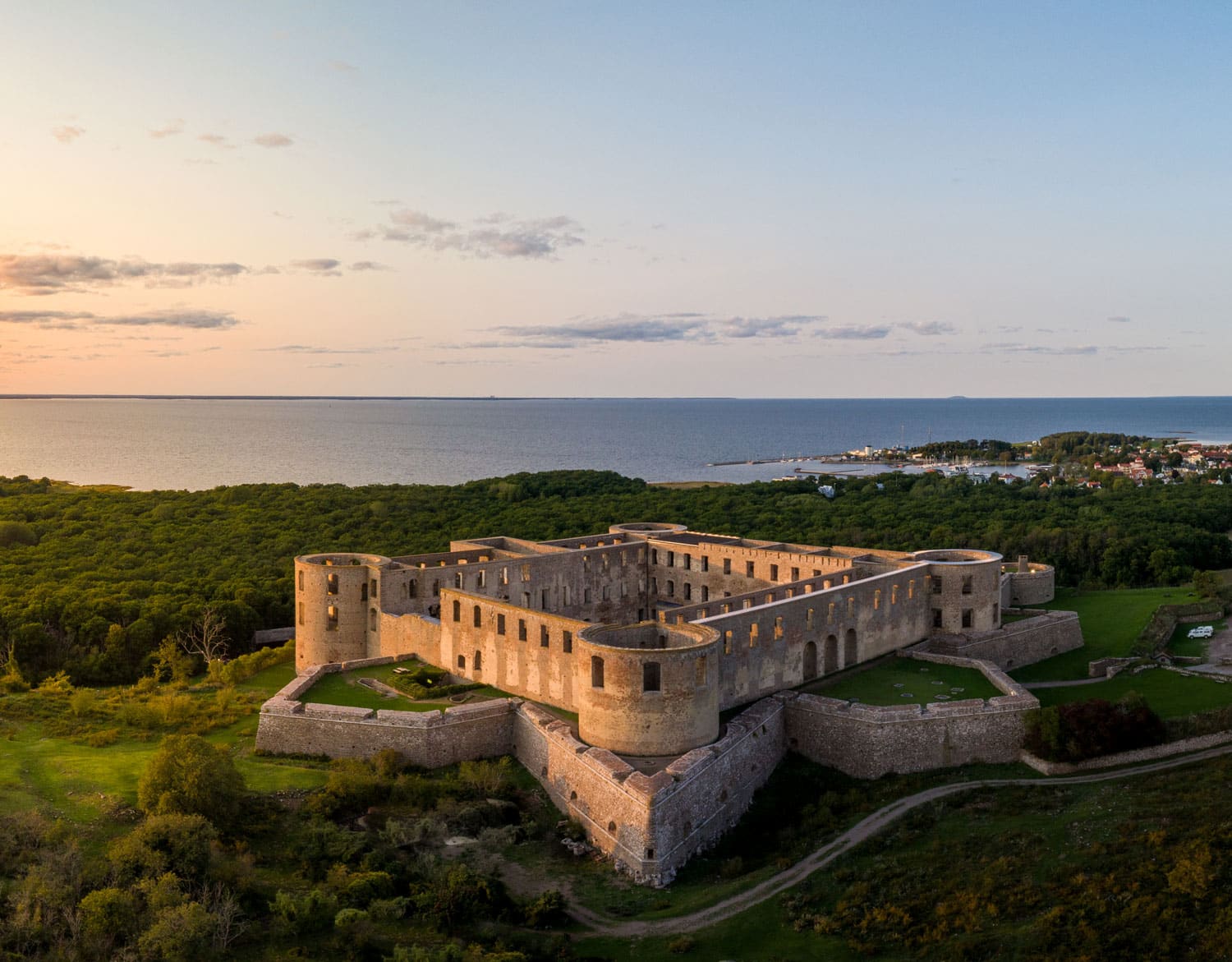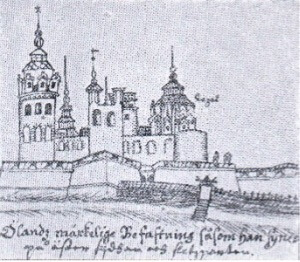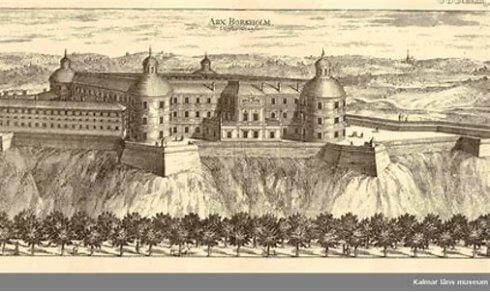The history of Borgholm Castle stretches back 800 years. What remains nowadays, is the ruin of the magnificent Baroque palace built by Karl X Gustav in the middle of the 17th century. Over the centuries, the castle has been crowded with people, from kings and their families, architects and castle wardens to farmers, prisoners, prison guards, industrialists and crofters. Initially, the foundations of the castle were constructed as a keep surrounded by a bailey as early as the 12th century. Since then they have been developed in step with the history of Borgholm Castle.
Borgholm Castle as a defensive fortification
The 12th century was a turbulent time for Northern Europe. The Swedish empire was still weak and lacked authority over the most remote regions. Pagan peoples on the other side of the Baltic Sea threatened the shores of the Baltic. There was piracy against merchant shipping and coastal areas suffered repeated attacks and looting.
In order to protect the sparsely populated areas from piracy and looting, a chain of defensive fortifications was built. During the same period, the oldest known part of Borgholm Castle was also constructed, a strong keep, which was then further strengthened during the 13th century.
The first written evidence of Borgholm Castle can be found in a letter from 1281 signed by King Magnus. The letter tells of a newly built castle, which in the letter is referred to as “Our Castle”. The original keep was damaged countless times, but remained standing until 1653, when it was demolished to make way for the new baroque palace, whose construction commenced in the 1650s.
From a keep to a renaissance palace
During the 1360s, the older medieval castle was rebuilt into a square stronghold. The royal castle in Borgholm became one of the country’s most important fortresses. Throughout the Middle Ages and until the 17th century, the castle was subject to both battles and destruction, followed by several reconstructions.
When Gustav Vasa came to power in 1523, the country’s castles had been severely ravaged in the Swedish War of Liberation. New firearms, such as cannons, had made their appearance in the war. The fortifications at Borgholm Castle were obsolete and, therefore, were not able to withstand the improved firearms, which resulted in further destruction.
Gustav Vasa and his sons, especially Johan III, later began further reconstruction. In 1572–89, Johan III had the castle completely rebuilt. The medieval castle was transformed into a magnificent renaissance palace.
During the Kalmar War fought between Sweden and Denmark in 1611–13, the castle was severely damaged. After the end of the war in 1613, the castle no longer met the requirements for a fortress. During the 1630s, Gustav II Adolf’s closest adviser, the Lord High Chancellor of Sweden Axel Oxenstierna, was of the opinion that the castle was suitable for nothing more than possibly a royal hunting castle. At the end of the 1640s, Queen Kristina granted Öland to her cousin and heir to the throne, Duke Karl Gustav, later Karl X Gustav. He also became the last great builder during the castle’s long history.
The fire at Borgholm Castle
The construction of the castle into a unified baroque palace began in 1652 and lasted until 1709. However, the rebuilding of the castle was never completely finished. Instead, the castle was left to more or less decay until 1803, when a new tenant, Axel Adlersparre, took up residency in the castle and established a dyehouse in its northern wing. However, the business did not last long. On 14 October 1806, the roof of the north wing was ignited by a spark from broken masonry and caught fire. The fire spread quickly in the strong wind and soon only a castle ruin was left.
In the middle of the 19th century, there were calls to preserve and maintain the dilapidated castle. In 1858, the then Crown Prince Oscar (II) visited the castle and was very upset about its decay. Two years later, the first state funds for maintenance were granted and used to rebuild windows and gun ports.
In the 1880s, arches and stairs were also repaired in the castle. The renovations were carried out so that the castle would not pose a risk to all the summer guests who had started visiting the now popular seaside resort of Borgholm. During the 19th century, trees and shrubs had also taken a firm hold on the old castle, which reinforced the sensation of a castle ruin. During the last 100 years, major renovation efforts have been made to preserve Borgholm Castle and today the castle is a well-visited place for tourists.
More information
To know more about the history of Borgholm Castle, visit the castle and go on our popular guided tours that are included in the admission price.
Read more about our opening hours and prices.





